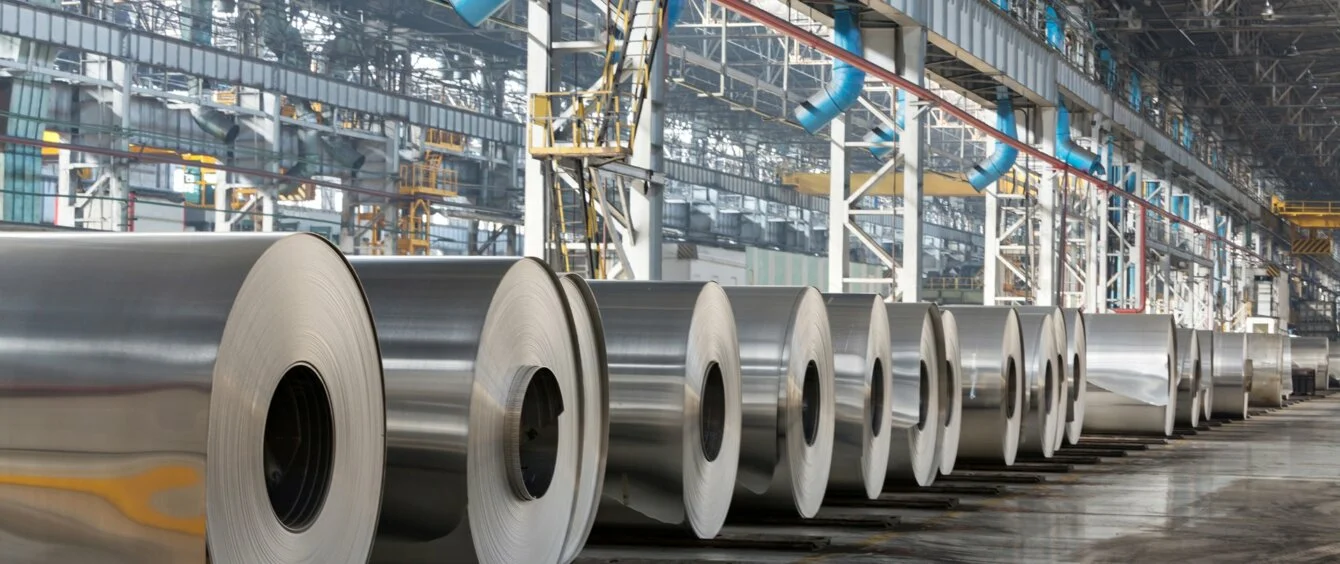Aluminium is light, durable, malleable and resistent to corrision. It is the second most abundant metallic element in the earth’s crust after silicon. Given its properties and availability, little wonder that its use exceeds that of any other metal worldwide except iron.
In 2020, the world produced 65.3 million tons of primary aluminium, but consumed 86.2 million tons. The difference is made up by recycling, but primary aluminium production is still on an upward trend, rising to 68.5 million tons in 2022.
A report published last year forecasts that aluminium demand will reach 119.5 million tons in 2030, driven by four main growth sectors – construction, packaging, transport and power. While it is carbon intensive to produce, aluminium is also an important element in the energy transition, as it is used in electric vehicles, the wind and solar industries and in grid development, replacing copper for cabling.
Aluminium production starts with the raw material bauxite, which is mined usually from a few meters below ground. Clay is washed from the bauxite which is then ground up and refined using a hot solution of caustic soda and lime. The mixture is heated and filtered and the extracted aluminium oxide, also called alumina, is dried.
To turn the alumina into aluminium, two other ingredients are needed: electricity and carbon. Using electrolysis, a carbon anode reacts with the oxygen in the alumina to form CO2, leaving liquid aluminium behind. This is cast into various shapes depending on its eventual use.
Global reserves of bauxite are estimated at between 55 and 75 billion tons, sufficient to meet world demand for years.
Aluminium production and emissions
Aluminum production worldwide resulted in nearly 270 million tons of direct CO2 emissions in 2022, according to the International Energy Agency, roughly 3% of global greenhouse gas (GHG) emissions. Based on current production methods, increased aluminium demand equates to increased GHG emissions.
GHG are emitted at various stages of the production process, but the bulk, about 73% of total emissions, occur in the electrolysis stage, when the carbon anode reacts with the oxygen in the alumina. A further 15% of emissions result from the refining stage.
Aluminium greenhouse gas emissions by stage of production
in percent, source: International AluminiumProject funding
Australia’s alumina refiners are exploring innovative ways of decarbonising their part of the production process.
In August, the Australian Renewable Energy Agency (ARENA) announced A$32.1 million in funding for a trial hydrogen calcination plant at the Yarwun Alumina Refinery in Gladstone, Queensland.
The Yarwun Hydrogen Calcination Pilot Demonstration Program will comprise a 2.5 MW hydrogen electrolyser and the retrofitting of one of the refinery’s calciners to operate with a hydrogen burner.
Hydrogen calcination is one of four potential options for alumina refining decarbonisation identified in an ARENA-sponsored roadmap for the sector published last year. The other three are mechanical vapour compression, electric boilers and electric calcination.
Large energy users
In 2020, Australia’s alumina refineries consumed 61,000 GWh of energy, the equivalent of 1.7 million households, according to ARENA. This was generated mainly from natural gas and coal, which are used on-site for process heat and electricity.
In the refinery, the two processes of ‘digestion’ (64%) and ‘calcination’ (31%) account for 95% of energy consumption.
According to the roadmap, calcination emissions could potentially be reduced to zero, if the process is fueled entirely by renewable hydrogen. Applied across the industry in Australia, this would result in emissions reductions of 3.5 million tons CO2e a year.
In addition, steam used in the hydrogen calcination process can be reused for heat, leading to even lower emissions. The roadmap estimates that combined with electric steam generation, hydrogen calcination could reduce an alumina refinery’s emissions by up to 98%.
Each of the four technological options identified by the roadmap need to be tested, and the Yarwun demonstration project promises to be an important step forward in assessing hydrogen calcination’s technical and commercial viability.
Need for green power
However, all of the four options identified have one aspect in common – they require large-scale or very large-scale access to renewable power and storage. This is either for direct green electricity use or indirect use to produce hydrogen.
Moreover, the refineries need firm power and heat supplies, underlining the need to couple renewable energy generation with electric and/or thermal storage, depending on the decarbonisation pathway adopted.
Success is therefore dependent not just on testing the new technologies but, in the case of hydrogen calcination, the development of large-scale renewable energy powering an evolving hydrogen ecosystem, which reduces unit costs for each individual user to make it economically viable.
As ARENA CEO Dan Miller commented, the project “underscores the importance of low-cost green hydrogen to decarbonise our largest industrial emitters.” And the basis of low-cost green hydrogen is low-cost clean renewable energy – on a very large scale.
